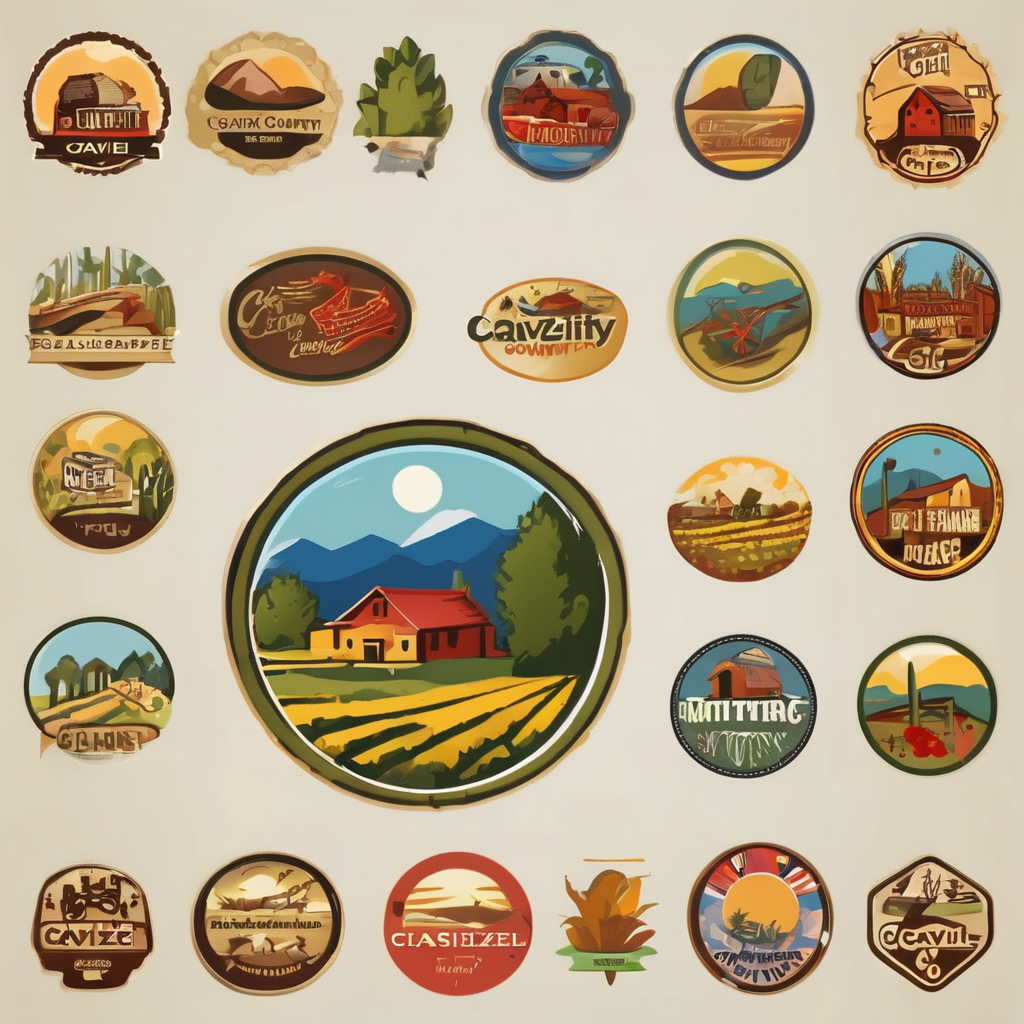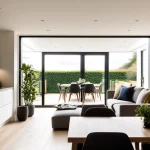Understanding Vintage Decor in Modern Homes
Embracing vintage decor within modern home aesthetics has become increasingly popular for those seeking a unique and personalized living space. Vintage decor typically includes items from previous decades, identifiable by their nostalgic character, craftsmanship, and distinctive style. These pieces often carry historical significance, adding intrigue and a story to modern interiors.
The appeal of vintage elements in contemporary settings lies in their ability to introduce warmth and individuality. When blended carefully, they create a balance between modern and vintage styles that enhances the overall design. This blend makes an otherwise uniform space feel curated and authentic, with each piece contributing to a cohesive yet eclectic look.
Additional reading : What are the key trends in UK home living for 2024?
Achieving this balance is crucial; it requires thoughtful design integration where vintage and modern elements complement rather than overwhelm each other. By considering design integration techniques, such as selective placement and contrasting textures, homeowners can seamlessly incorporate vintage decor into their modern homes, ensuring both styles shine in harmony.
Sources for Vintage Decor Items
For those eager to bring vintage decor into their homes, finding the right pieces is crucial. Sourcing vintage items can be a rewarding adventure, brimming with opportunities to unearth unique treasures that embody historical charm and craftsmanship. Here’s how you can embark on this delightful journey of discovery.
Also to see : How Can You Transform Your Home with Simple DIY Decor Projects?
Local Thrift Shops
Thrift shopping is a fantastic way to find budget-friendly vintage treasures. Local thrift shops often stock items overlooked by others, from furniture to smaller knick-knacks. Visiting these shops regularly increases the chances of discovering rare finds. Establishing a good rapport with shop staff may also lead to early notices about incoming vintage gems.
Online Marketplaces
In the digital age, online marketplaces have transformed how we access vintage decor. Platforms like eBay, Etsy, and even specialized vintage shops offer a plethora of options, allowing you to browse through a wide array of eras and styles at your convenience. It’s essential to review seller ratings and product descriptions carefully to ensure the authenticity and quality of the items.
Flea Markets and Antique Fairs
Flea markets and antique fairs are treasure troves for sourcing vintage items. These venues provide a dynamic environment where vendors showcase an eclectic mix of vintage goods. Attending these markets can yield surprising finds and provide the opportunity to hone your negotiation skills. Remember to scrutinize items for quality and potential reusability to make the most of your purchase.
Strategies for effective shopping include staying patient and open-minded. It’s not just about what you find but what you can imagine the item becoming in your home. By identifying quality vintage pieces and negotiating prices wisely, you can integrate stunning vintage decor into your modern space seamlessly.
Successful Examples of Vintage Decor Integration
Exploring vintage decor examples in real homes provides invaluable home design inspiration for blending styles. Across the UK, several notable case studies showcase how vintage elements can transform modern living spaces. One such example reveals a 1920s cottage in Sussex, where the owners seamlessly combined vintage and contemporary styles. The careful integration of a vintage Chesterfield sofa with sleek, modern lighting illustrates how these seemingly contrasting designs can coalesce into a cohesive and charming interior.
Visual storytelling through before and after images highlights the transformative power of vintage decor. These images allow homeowners to envisage the potential of integrating vintage items into their spaces, guiding them towards similar successful outcomes. In a London townhouse, for instance, incorporating mid-century modern chairs with bold, contemporary art demonstrates effective style blending, offering not only visual harmony but also unique character to the environment.
The aesthetic benefits observed in real-life applications are compelling. By integrating sophisticated vintage pieces such as ornate mirrors or distressed wood furniture, spaces gain depth and warmth, enhancing richly layered designs. Such thoughtful integration not only elevates individual style but also celebrates the narratives that vintage decor brings to a modern home.
Design Trends for Vintage and Modern Fusion
The fusion of vintage design trends with contemporary decor is becoming increasingly popular, offering unique opportunities to create captivating home styling trends.
Popular Color Palettes
One key aspect of this fusion is the current color trends. Soft, muted hues like sage, blush, and slate blue harmonize well with both vintage and modern styles. These colors serve as a neutral backdrop that can easily accommodate vibrant pops of color from vintage pieces, making them stand out without overwhelming the space.
Textural Mixing Techniques
Another essential element is textural mixing techniques. Imagine the dynamic impact of combining different textures: sleek modern materials like glass and metals paired with vintage textiles such as velvet or distressed wood. This contrast adds depth and tactile interest, making spaces feel both inviting and sophisticated.
Key Furniture Pieces
Iconic vintage furniture pieces, like the Eames chair or a mid-century sideboard, are timeless examples that suit contemporary spaces. These items not only contribute historical significance but also offer functional beauty, acting as statement pieces within modern interiors.
By embracing these elements, homeowners can craft environments that celebrate the past while enjoying the conveniences of modern design.
DIY Projects to Incorporate Vintage Touches
Incorporating vintage flair into modern spaces can be a rewarding DIY endeavor. Simple projects enable homeowners to personalize their environments, effortlessly bridging the gap between past and present. Upcycling techniques are particularly effective for this purpose, transforming forgotten items into eye-catching decor.
Simple DIY Projects
- Repurpose vintage frames: Convert old frames into elegant mirrors or chalkboards. This adds both functionality and charm.
- Transform vintage textiles: Sewing cushions or drapes from antique fabrics infuses modern rooms with texture and historic personality.
- Refinish vintage furniture: A fresh coat of paint or varnish can rejuvenate an old piece, making it a stunning focal point in any room.
By embracing these techniques, individuals can enjoy a blend of vintage art and accessories. Consider displaying classic music records or retro advertisements as wall art, offering visual interest and nostalgia.
Upcycling Techniques
Upcycling involves creatively repurposing items that might otherwise be discarded. This not only enhances modern spaces but also promotes sustainability. Old ladders can become bookcases, or trunks can serve as coffee tables. These elements add unique character and are conversation starters.
Integrating vintage elements via DIY projects helps infuse personality and uniqueness into contemporary settings, creating spaces that feel curated and authentic.
Overcoming Challenges in Blending Styles
Successfully combining vintage decor with modern home aesthetics can present several blending styles challenges. However, with the right strategies, these hurdles can be minimized, allowing homeowners to create spaces that feel both harmonious and visually appealing.
Maintaining Cohesiveness
One main challenge in designing with vintage is maintaining a cohesive look. To achieve this, focus on a unifying element such as a consistent color palette or theme. Using design integration techniques, like pairing vintage decor with modern pieces in a complementary manner, ensures that the overall design remains unified rather than disjointed.
Avoiding Clutter
Decor integration hurdles include the risk of overcrowding when incorporating multiple vintage items. To prevent clutter, it’s important to be selective about the vintage pieces you choose. Evaluate each item’s size and visual impact, and arrange them strategically to promote a sense of balance and openness in the space. Avoid filling every corner—allowing some breathing room around your vintage decor can enhance their presence.
Dealing with Mismatched Elements
Another common issue is harmonizing mismatched elements. To address this, use techniques such as layering and repetition. For instance, if you have unmatched chairs, consider unifying them with identical seat cushions or by painting them a single color. This approach can transform disparate items into a coordinated ensemble, strengthening their integration into the overall design.
By implementing these strategies, the challenges of blending vintage and modern styles can be effectively managed, resulting in a coherent and inviting home environment.


